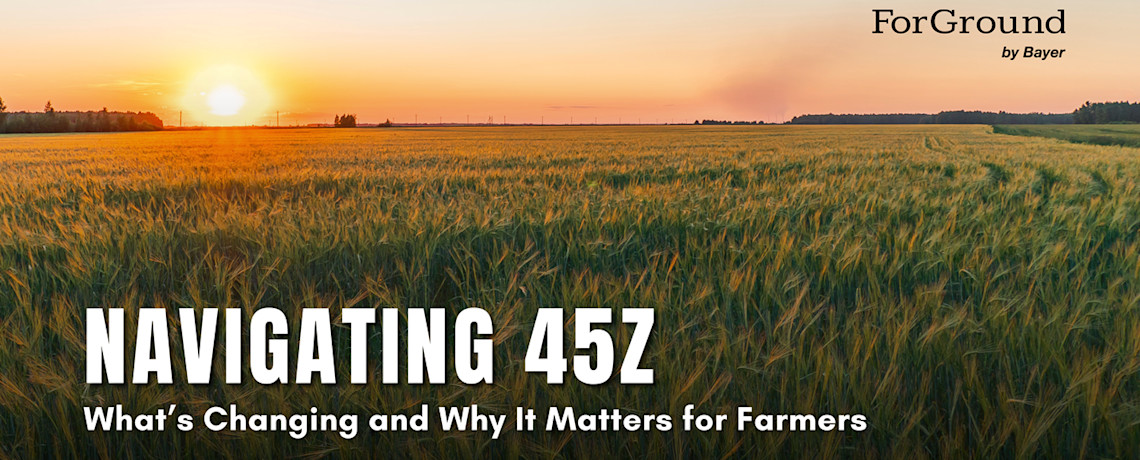
Navigating 45Z: What’s Changing and Why It Matters for Farmers
Written by: ForGround by Bayer
There’s been movement in Washington on the 45Z Clean Fuel Production Credit — and while final guidance is still in the works, some important updates are now official.
On July 10, 2025, the U.S. House of Representatives agreed to the Senate amendments and passed the reconciliation bill that finalizes key changes to the 45Z tax credit. Many of these changes won’t take effect until 2026, and we’re still awaiting formal guidance from the Treasury Department to clarify the next steps.
What’s Changing with 45Z?
- Extended Timeline: The 45Z tax credit has been extended through December 31, 2029. While this is two years shorter than the original House proposal, it still provides a longer runway than previous legislation.
- Indirect Land Use Change (ILUC) Excluded: For fuel produced and sold after December 31, 2025, ILUC emissions will no longer factor into carbon intensity calculations—potentially benefiting certain crop-based biofuels.
- Feedstock Sourcing Restrictions: Starting in 2026, only fuels made from feedstocks grown and harvested in the U.S., Canada, or Mexico will qualify for the credit. This includes corn, soybeans, and other crops — meaning foreign-grown commodities and imported oils like palm oil, foreign tallow, or used cooking oil from outside North America will no longer be eligible.
- Negative Emissions Prohibited (with Exceptions): The use of negative emissions rates to enhance credit value is prohibited, except for fuels derived from animal manure feedstocks such as dairy, swine, or poultry waste.
- Reduced SAF Credit Rate: The 45Z credit rate for Sustainable Aviation Fuel (SAF) will decrease from $1.75 to $1 per gallon for fuel produced after December 31, 2025.
What Comes Next?
We’re now waiting on the Treasury Department to integrate these updates into official 45Z guidance. As of today, no formal timeline has been set.
Our mission is to help farmers understand how credits like 45Z could create real market opportunities — whether through carbon reduction efforts, sustainable practices, or low-carbon feedstock production.
What This Means for Farmers
Understanding the opportunities — and potential risks — is critical. Because the 45Z credit is emissions-based, the value of the credit will depend on the Carbon Intensity (CI) score of the feedstocks produced.
It’s important for farmers to know that only the biofuel producer can legally claim the 45Z tax credit — not the farmer directly. That means any potential value at the farm level will depend on how the credit is shared through contracts or partnerships with the biofuel producer or other intermediaries.
While there’s a lot of interest and speculation around the financial potential of 45Z, much is still unknown — including how credits will be distributed, how CI scores will be calculated, and how participating growers may be compensated. Be cautious of service providers or programs that suggest you will make more (or any) money based on 45Z. Until final guidance is released, it’s wise to stay informed, ask questions, and avoid overcommitting to programs that promise guaranteed payouts.
Stay Connected with ForGround by Bayer
If you’re a grower looking to understand how programs like 45Z and others may impact your farm, be sure to create a free ForGround by Bayer account. As a member, you’ll receive updates, program insights, and information on new opportunities as they become available.
Sign up today and stay ahead of the curve.